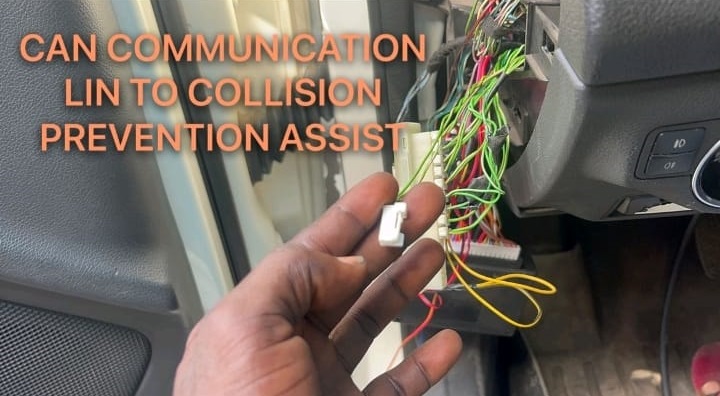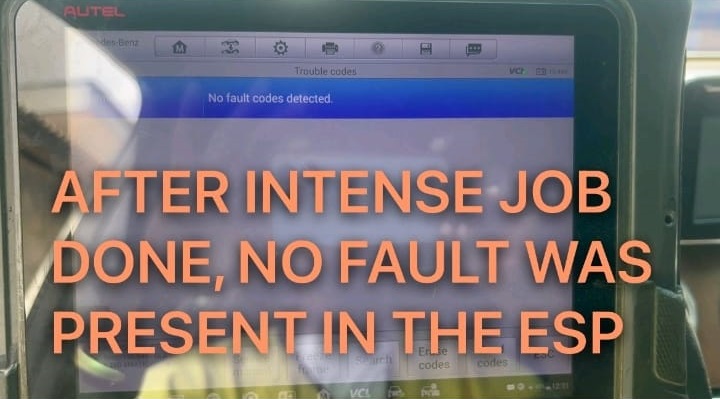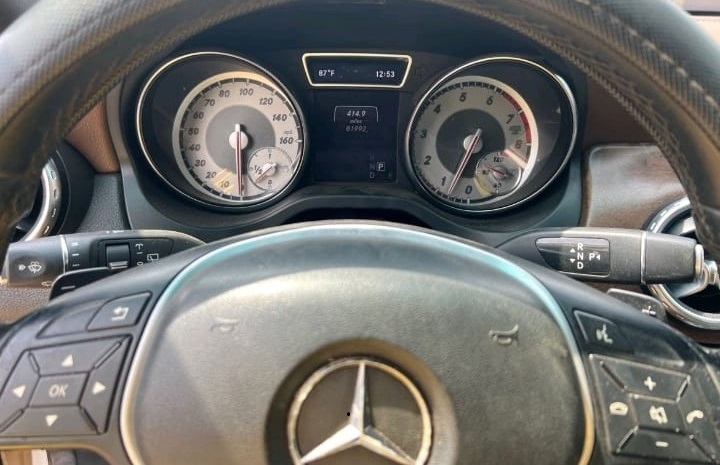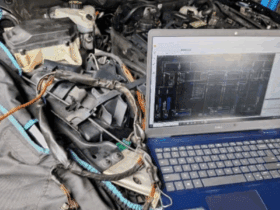Table of Contents
Case Study: Whining Noise From Gearbox in Mercedes-Benz GLA 250 , Full Diagnostic Breakdown
Transmission noise in Mercedes vehicles can be challenging to diagnose especially when accompanied by multiple electronic warnings. This real-world case study from a 2015 Mercedes-Benz GLA 250 4MATIC shows how a seemingly mechanical “whining noise from gearbox” was actually caused by a CAN communication failure, not a failing transmission.
For more transmission-related troubleshooting and repairs, explore our main hub:
Mercedes Transmission Issues: Causes and Fixes
Vehicle & Symptoms
Model: Mercedes-Benz GLA 250 4MATIC (2015)
Customer-Reported Symptoms
- – Persistent whining noise from gearbox immediately after engine start
- – Flashing Electronic Parking Brake light
- – Hill Climb Assist warning activation
- – Collision Prevention Assist Plus malfunction
- – Multiple electronic features behaving abnormally
Because the noise and warnings appeared at the same time, the case required a diagnostic approach that considered both mechanical and electrical/CAN network faults.

Step 1 : Initial Assessment
Upon startup, technicians confirmed:
- – The whining noise was constant
- – The sound occurred before the vehicle was shifted into gear
- – Multiple ADAS systems were disabled
- – Parking brake & Hill Assist warnings flashed intermittently
This early observation strongly suggested the noise was not originating from planetary gears or transmission clutches, but possibly from a module or component activating abnormally due to an electrical fault.

Step 2 : Full System Scan (AUTEL Diagnostics)
A comprehensive diagnostic scan revealed:
Fault Codes Identified
- – CAN Communication Error with ESP
- – CAN Communication Error with Collision Prevention Assist Plus
- – Unstable data exchange across the drivetrain CAN network
Because transmission, ESP, and ADAS functions all depend on CAN communication, electrical faults could force the gearbox into protective behavior triggering unusual noises or actuator movements.
Key Insight:
The whining sound was likely coming from an electronically controlled actuator receiving corrupted or partial CAN commands.

Step 3 : Understanding System Interaction
Modern Mercedes transmissions (7G-DCT in the GLA) depend on stable CAN communication:
| Component | Function | Impact if CAN Fails |
|---|---|---|
| ESP Control Unit | Stability control & torque requests | May send incorrect torque limits |
| CPC+ / ADA Module | Collision Prevention | May trigger emergency actuation |
| Transmission Mechatronic | Gear selection & pressure control | May output unusual pump noise |
| EPB Control Unit | Parking brake logic | May generate motor activation sounds |
When CAN noise or open circuits occur, modules attempt to re-establish communication often creating high-pitched whining sounds, commonly mistaken for gearbox failure.
Step 4 : Isolating the Defective CAN Line
Technicians methodically disconnected each CAN branch while monitoring:
- – The whining noise behavior
- – Live CAN traffic
- – Module online/offline status
Breakthrough:
When one specific CAN branch connected to the Collision Prevention Assist Plus module was unplugged:
=> The whining noise immediately stopped
=> All other warning lights stabilized
This proved the noise was caused by faulty communication, not mechanical transmission wear.



Step 5 : Root Cause Inspection
After accessing the wiring to the ADA/Collision Prevention Assist Plus module, technicians discovered:
Critical Findings
- – Severe corrosion inside CAN connectors
- – Broken pins causing intermittent contact
- – Exposed wires with light oxidation
- – Moisture residue in the connector housing
These conditions produce:
- – CAN signal distortion
- – Module boot-loop behavior
- – Repeated actuator attempts
- – Resulting whining sound resembling gearbox noise
This is a common failure point in GLA models due to rear bumper moisture exposure.

Step 6 : Repair Procedure
Technicians performed the following steps:
=> Continuity Testing
Multimeter used to confirm:
- – Open circuits
- – High resistance on CAN-H/CAN-L
- – Shorting risk

=> Connector Repair
- – Removed corroded terminals
- – Replaced damaged pins
- – Cleaned connector housing
- – Applied dielectric grease
- – Secured harness to reduce vibration stress
=> Module Verification
The module was still functional no replacement required once communication was restored.
Step 7 : Final Testing & Validation
After restoring the CAN connector:
✔ Whining noise gone
✔ Parking Brake warning cleared
✔ Hill Assist restored
✔ Collision Prevention Assist Plus operating normally
✔ No remaining CAN or ESP faults
✔ Transmission behavior normal under load and road test
A final high-speed drive confirmed there were no residual noises or delays in gearbox torque response.

Case Study Conclusion
This case proves a key point:
A whining noise from the gearbox does NOT always mean a gearbox failure.
Electrical CAN faults can fully mimic mechanical transmission issues.
What technicians should learn:
- – Always perform a full CAN network scan before suspecting mechanical failure
- – A single corroded connector can disable multiple systems
- – Transmission noises triggered at engine start often point to actuator or control module communication errors
- – Never replace expensive transmission components without isolating CAN faults
What owners should know:
If your Mercedes shows:
- – Whining noise at idle
- – Electronic Parking Brake warnings
- – Hill Assist malfunction
- – ADAS system failures
the root cause may be electrical rather than major transmission damage.
FAQs
What causes whining noise from the gearbox in Mercedes vehicles?
Common causes include:
- – Low or old transmission fluid
- – Mechatronic actuator noise
- – Faulty CAN communication (as in this case)
- – Worn bearings or internal transmission wear
How can I prevent whining noise from the gearbox?
- – Regular ATF fluid changes
- – Routine inspection of wiring & moisture-prone connectors
- – Address warning lights immediately
Is it safe to drive with a whining noise from the gearbox?
Not recommended. The issue may worsen or disable critical systems.
Immediate diagnosis is necessary.
Author Bio
Written by Mercedes Expert
With years of hands-on experience diagnosing and repairing Mercedes-Benz systems, he brings technical depth and practical case studies to help car owners, technicians, and enthusiasts troubleshoot complex automotive issues. His work focuses on clear repair guides, OEM-level procedures, and knowledge-sharing to empower both professionals and drivers.
Last update: November 2025






Leave a Reply